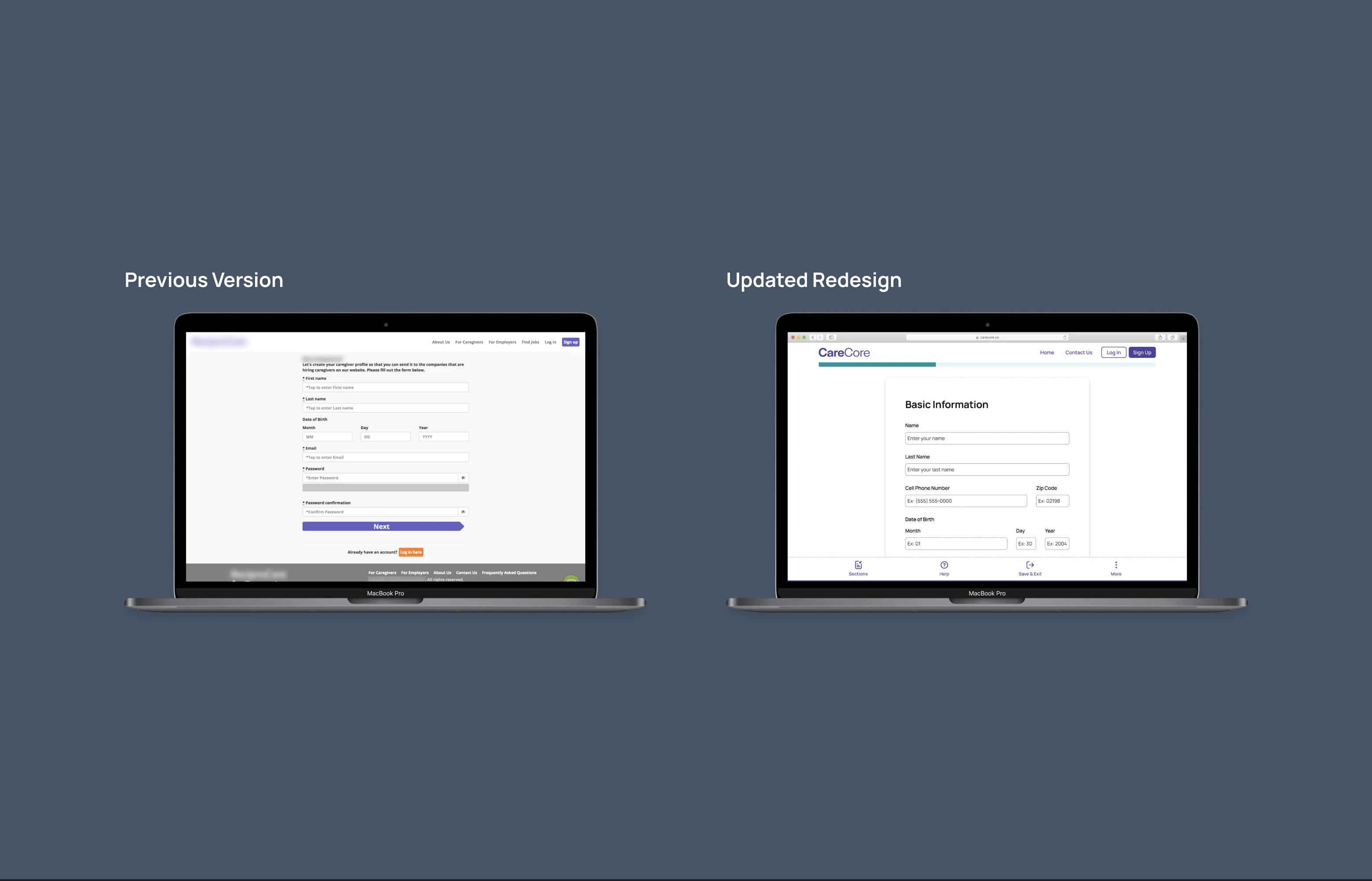Overview
Building Trust Where Care Meets Design
CareCore was a HIPAA-compliant healthcare job marketplace connecting caregivers with employers, including service providers and families, seeking patient care.
When I joined, workflows across the platform and website had inconsistencies, bugs, and gaps that slowed onboarding, reduced profile clarity, and weakened the brand’s digital presence.
My goal: streamline onboarding, restructure caregiver profiles, and modernize the website to create a more intuitive, trustworthy, and scalable user experience.
Overview
Building Trust Where Care Meets Design
CareCore was a HIPAA-compliant healthcare job marketplace connecting caregivers with employers, including service providers and families, seeking patient care.
When I joined, workflows across the platform and website had inconsistencies, bugs, and gaps that slowed onboarding, reduced profile clarity, and weakened the brand’s digital presence.
My goal: streamline onboarding, restructure caregiver profiles, and modernize the website to create a more intuitive, trustworthy, and scalable user experience.

